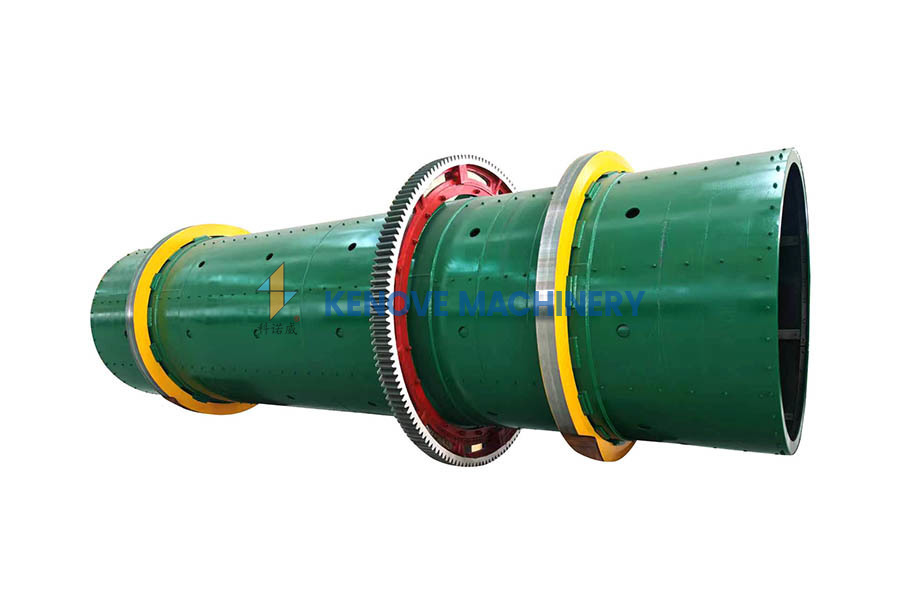Innovative Solutions: How Rotary Drum Agglomerators Transform Agriculture
Release time:
Jul 31,2025
Innovative Solutions: How Rotary Drum Agglomerators Transform Agriculture Table of Contents Introduction to Rotary Drum Agglomerators What Are Rotary Drum Agglomerators? Working Principle of Rotary Drum Agglomerators Advantages of Using Rotary Drum Agglomerators in Agriculture Applications of Rotary Drum Agglomerators in Agriculture Impact of Rotary Drum Agglomerators on S
Innovative Solutions: How Rotary Drum Agglomerators Transform Agriculture
Table of Contents
- Introduction to Rotary Drum Agglomerators
- What Are Rotary Drum Agglomerators?
- Working Principle of Rotary Drum Agglomerators
- Advantages of Using Rotary Drum Agglomerators in Agriculture
- Applications of Rotary Drum Agglomerators in Agriculture
- Impact of Rotary Drum Agglomerators on Soil Health
- Sustainability and Eco-Friendliness of Rotary Drum Agglomerators
- The Future of Agricultural Technology: Rotary Drum Agglomerators
- Frequently Asked Questions
- Conclusion
Introduction to Rotary Drum Agglomerators
In the ever-evolving world of agriculture, the pursuit of efficiency and sustainability is paramount. One of the most **innovative technologies** that has emerged to support these goals is the **rotary drum agglomerator**. This advanced machinery plays a pivotal role in enhancing the **agricultural process**, allowing for the effective compaction and granulation of various materials. In this article, we will explore how rotary drum agglomerators transform agricultural practices, improve productivity, and contribute to a sustainable future.
What Are Rotary Drum Agglomerators?
Rotary drum agglomerators are specialized machines designed for compaction and granulation. Operating on a continuous basis, these agglomerators process various materials, including fertilizers, soil amendments, and other agricultural inputs. By transforming granular materials into larger aggregates, they enhance the handling and application of these substances in farming environments.
Key Features of Rotary Drum Agglomerators
- **Continuous Operation**: These machines work continuously, increasing throughput and efficiency.
- **Versatile Material Processing**: Capable of handling a wide range of materials, including organic and inorganic inputs.
- **Customizable Settings**: Adjustable parameters allow for the optimization of the final product, ensuring the ideal size and shape of agglomerates.
Working Principle of Rotary Drum Agglomerators
At the heart of rotary drum agglomerators lies a simple yet effective principle. The materials are fed into a rotating drum, where they are subjected to mechanical forces from paddles or other mixing elements. As the drum rotates, these forces compress and agglomerate smaller particles into larger, more manageable clumps.
Process Breakdown
1. **Material Entry**: The raw materials are fed into the drum via a **hopper**.
2. **Agglomeration**: As the drum rotates, the materials are mixed, moistened, and compressed, causing them to stick together.
3. **Particle Growth**: Continued rotation and mixing promote further agglomeration, resulting in larger particles.
4. **Discharge**: The finished agglomerates are discharged at the end of the drum, ready for use.
Advantages of Using Rotary Drum Agglomerators in Agriculture
Implementing rotary drum agglomerators in agricultural practices offers numerous benefits that enhance productivity and sustainability.
Increased Efficiency
By streamlining the process of material granulation, rotary drum agglomerators significantly reduce labor and time costs. Their continuous operation allows farmers to process large quantities of materials quickly, improving overall efficiency.
Enhanced Product Quality
The agglomeration process results in uniform particle sizes and shapes, which can improve the **application** and effectiveness of fertilizers and soil amendments. This uniformity ensures that nutrients are distributed evenly, promoting better plant growth.
Reduced Waste
By transforming smaller particles into larger aggregates, rotary drum agglomerators minimize material waste. This efficient use of resources not only decreases costs but also promotes environmentally friendly practices.
Applications of Rotary Drum Agglomerators in Agriculture
The versatility of rotary drum agglomerators allows for a wide range of applications within the agricultural sector.
Fertilizer Production
One of the primary applications of rotary drum agglomerators is in **fertilizer production**. By granulating various nutrients, these machines produce high-quality fertilizers that are easy to handle and apply.
Soil Amendments
Rotary drum agglomerators are also used to create soil amendments, such as compost and organic fertilizers. These amendments improve soil health and promote sustainable farming practices.
Animal Feed Production
The agricultural sector also benefits from rotary drum agglomerators in the production of animal feed. By agglomerating feed ingredients, these machines enhance their nutritional value and palatability for livestock.
Impact of Rotary Drum Agglomerators on Soil Health
The use of rotary drum agglomerators positively influences soil health through improved nutrient delivery and soil structure.
Improved Nutrient Availability
The uniformity of agglomerated fertilizers ensures that plants receive a balanced supply of nutrients, leading to healthier crops and improved yields. This precise nutrient delivery can reduce the need for excessive fertilization, minimizing the risk of nutrient runoff into water bodies.
Enhanced Soil Structure
Aggregates produced by rotary drum agglomerators can improve soil structure by promoting aeration and water retention. This results in healthier root systems and better overall plant health.
Sustainability and Eco-Friendliness of Rotary Drum Agglomerators
As agriculture moves toward more sustainable practices, rotary drum agglomerators play a vital role in promoting eco-friendly farming.
Reduction of Chemical Inputs
By providing targeted nutrient delivery and enhancing soil health, rotary drum agglomerators can reduce the reliance on chemical fertilizers. This shift toward organic and natural amendments is beneficial for the environment.
Energy Efficiency
Modern rotary drum agglomerators are designed for energy efficiency, minimizing their environmental impact. Innovations in design and technology continue to improve their energy consumption, making them a more sustainable choice for farmers.
The Future of Agricultural Technology: Rotary Drum Agglomerators
The adoption of rotary drum agglomerators is expected to grow as farmers seek innovative solutions to meet the demands of a changing agricultural landscape.
Integration with Precision Agriculture
As precision agriculture gains traction, rotary drum agglomerators will likely play a role in creating customized fertilizers tailored to specific field conditions. This integration promises to optimize resource use and enhance crop productivity.
Continued Innovation
The future of rotary drum agglomerators is bright, with ongoing advancements in technology aimed at improving their efficiency, effectiveness, and eco-friendliness. Farmers can expect to see new features and capabilities that will further enhance their agricultural practices.
Frequently Asked Questions
1. What materials can be processed using rotary drum agglomerators?
Rotary drum agglomerators can process various materials, including fertilizers, soil amendments, and animal feed ingredients.
2. How does the agglomeration process improve fertilizer efficiency?
The agglomeration process creates uniform particle sizes, ensuring even nutrient distribution, which enhances the effectiveness of fertilizers.
3. Are rotary drum agglomerators suitable for small farms?
Yes, smaller models are available, making rotary drum agglomerators suitable for farms of all sizes.
4. What are the maintenance requirements for rotary drum agglomerators?
Routine maintenance includes checking for wear and tear, lubrication of moving parts, and ensuring proper cleaning to maintain efficiency.
5. How do rotary drum agglomerators contribute to sustainable agriculture?
By reducing waste, minimizing chemical inputs, and improving soil health, rotary drum agglomerators support sustainable farming practices.
Conclusion
Rotary drum agglomerators represent a transformative technology in agriculture, enhancing efficiency, reducing waste, and promoting sustainable practices. Their ability to process various materials for fertilizers, soil amendments, and animal feed positions them as invaluable tools for modern farmers. As agricultural technology continues to evolve, the impact of rotary drum agglomerators will undoubtedly grow, shaping the future of farming for years to come. Embracing this innovation not only improves productivity but also contributes to a more sustainable agricultural landscape, aligning with the global drive for eco-friendly practices.







